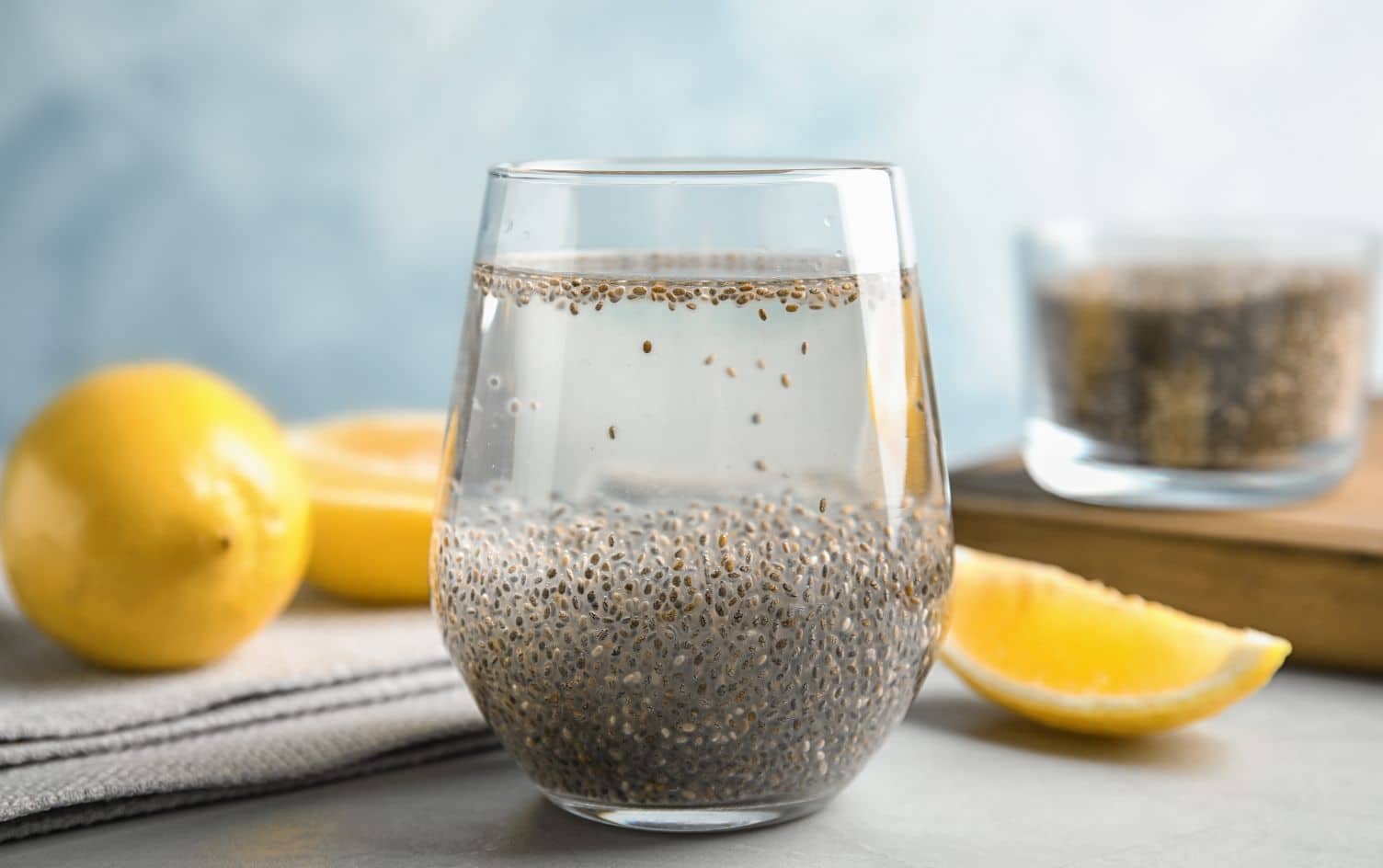As we navigate the ever-evolving world of social media, it’s no surprise that trends in food and nutrition come and go. Platforms like TikTok, YouTube, and Instagram have become go-to sources for health and wellness advice. In fact, a recent study conducted by MyFitnessPal found that 47% of people surveyed trust TikTok when it comes to providing reliable nutrition and health advice.
According to the same study, both Millennials and Gen Z turned to TikTok for nutrition and health guidance in 2023, with 87% of people surveyed using the platform for such advice, and 57% of people surveyed reported being influenced by or frequently adopting nutrition trends from TikTok. The numerous captivating trends, including internal showers and cottage cheese ice cream, captured the attention of health enthusiasts, foodies, and inquisitive minds alike. So, we asked our registered dietitians at MyFitnessPal to give us the real skinny on these trends. Do they get a “Yay!” or “Nay!” based on credible scientific research? Keep reading to find out.
Trend 1: Internal Shower
What it is:
The premise is simple: add two tablespoons of chia seeds to a glass of water with a squeeze of lemon, let the drink sit, and then consume it quickly in an effort to promote bowel movement. Some people recommend it as a pre-flight drink to prevent travel constipation. Most TikTok users who have tried the drink credit “Dr. Daryl” in their videos, referring to Daryl Gioffre, a board-certified chiropractor. He calls it a “constipation reliever shot”.
Dietitian verdict: Yay!
Steph Tarnacki says, “This can be an effective way to add bulk to your stool, activate your gastrointestinal system, and promote regular bowel movements.”
What to know:
Chia seeds are rich in fiber, with one serving (2.5 tbsp) providing approximately 10g of soluble fiber, which helps in forming and softening stool. Tarnacki explains, “The ‘liquid load’ also helps propel stool through your colon. Chia seeds contain mucilage, which creates the sticky, gel-like texture of chia seed water. Fiber not only aids regularity but also lowers LDL cholesterol, prevents blood sugar spikes, and promotes a feeling of satiety.”
But be careful! Increasing fiber intake too rapidly can worsen constipation. And excessive consumption of fiber, including chia seeds, may increase the risk of bowel obstruction. Not sold on the internal cleanse? Eating more fiber-rich foods, exercising regularly, and staying hydrated are always ways to support healthy digestion.
Trend 2: Liquid Cleanse
What it is:
A liquid cleanse, often referred to as a detox or juice cleanse, is a type of diet that involves consuming only liquids for a certain period of time. These cleanses typically include a variety of juices or smoothies made from fruits and vegetables, herbal teas, and water. The aim is to flush toxins out of the body. Advocates of liquid cleanses argue that they can help rest the digestive system, improve energy, support weight loss, and boost overall health.
Social media platforms, particularly TikTok, played a pivotal role in spreading the trend of liquid cleanses in 2023. Users across the globe shared their experiences, with the TikTok hashtag #juicecleanse amassing millions of views.
Dietitian verdict: It’s complicated…
“In certain cases, a temporary liquid diet may be effective in treating certain medical conditions when deemed appropriate by a healthcare professional,” explains Daisy Mercer. “In most other cases, your digestive system does not need a break, and this does not help rid the body of ‘toxins.'”
What to know:
If your body is functioning normally, you do not need to periodically cleanse it. Your kidneys and liver should effectively remove anything harmful from your body. By eliminating whole foods from your diet, you actually can starve your beneficial gut bacteria of essential nourishment and nutrients needed to thrive. This can cause gastrointestinal issues, including symptoms like diarrhea.
“Eat a balanced diet with lots of fiber to help feed the good bacteria in your gut,” suggests Mercer. “This will help with regular bowel movements and a generally happier digestive system. Taking pre- and probiotics can also help maintain a healthy gut microbiome.”
Trend 3: Raw Carrot Salad
What it is:
This trend involves consuming a daily serving of raw, shredded carrots dressed with a bit of vinegar and olive oil. Advocates claim that it’s not only a tasty, fiber-filled addition to your daily meals, but also a magical detoxifier. The theory is that raw carrots bind to toxins and excess estrogens in your body, helping to eliminate them. This trend gained popularity among health enthusiasts on TikTok, with users sharing their creative carrot salad recipes and the health benefits they’ve experienced.
Dietitian verdict: Nay!
“Though many people on TikTok attribute the raw carrot salad to balancing their estrogen levels, the scientific literature doesn’t support the claim that carrots have a unique ability to do so,” explains Emily Sullivan.
What to know:
While some research suggests that diets rich in fiber may contribute to lower levels of circulating estrogen, they don’t specifically focus on raw carrots. In general, high-fiber diets have been shown to reduce the risk of cardiovascular disease, diabetes, breast cancer, and colon cancer. Therefore, incorporating more fiber into your diet through fruits, vegetables (including carrots!), and whole grains can benefit your overall health in multiple ways.
“But hormonal imbalances are complex medical conditions that can be influenced by multiple factors such as lifestyle, diet, medications, and underlying diseases,” explains Sullivan. “Therefore, the treatment for hormone imbalances is often multifaceted and dependent on the specific underlying cause.”
In other words, eating carrot salad is fine — great even, since 1 cup of carrots contains 3g of fiber, as well as vitamin A, vitamin K, and the antioxidant beta-carotene among other nutrients — but it’s likely not a cure-all for hormone imbalances.
Trend 4: Detox for Weight Loss
What it is:
Detox for weight loss is often promoted on social media as a quick-fix solution to shed pounds and rid the body of toxins. The recipes vary but typically involve a blend of fruits, vegetables, herbs, and sometimes a magic superpowder, all blended into a smoothie or tea.
Dietitian verdict: Nay!
“There is little evidence to support the effectiveness of detox drinks or diets,” says Joanna Gregg. “Much of the research conducted on this topic has been on animals or a small sample size without a control group.”
What to know:
“Detox diets or elimination diets may lead to short-term weight loss by restricting calorie intake, but the weight is usually regained when a normal diet is resumed,” explains Gregg. “As for detoxing, there is limited evidence that specific nutrients can eliminate toxins from the body.”
For optimal health and weight management, Gregg recommends following a well-balanced diet that includes fruits, vegetables, whole grains, low-fat dairy, and lean proteins. Increasing physical activity is also crucial.
If your goal is targeted weight loss, it’s important to reduce calorie intake and increase caloric output through exercise or physical activity.
In general, instead of eliminating all food or following a detox plan, eliminate the foods and beverages that are impacting your diet. Think: alcohol, sugary drinks, or processed foods. Instead, focus on nourishing your body with whole, nutrient-rich foods.
Trend 5: Foods That Burn Stomach Fat
What it is:
This trend promotes certain foods that are believed to reduce belly fat, including avocados, green tea, chili peppers, and berries. The idea is that these “superfoods” can target and eliminate stubborn fat in your midsection, offering a simple solution.
Dietitian verdict: Nay!
According to Katherine Basbaum, these foods alone do not have enough impact to make a significant difference.
What to know:
Just as there is no specific exercise to reduce belly fat (known as “spot reduction”), there is no magic bullet food that can specifically target and melt fat in the stomach area, says Basbaum.
“While some research suggests that foods like green tea, chili peppers, meat, fish, and avocado can increase thermogenesis (the process by which the body burns calories), many of the studies involve much higher and more concentrated dosages than what a person would typically consume in a day.”
It’s also important to remember that the majority of our calories are burned through regular daily activities, metabolic functions, and exercise. Only about 10 percent of calories are burned through diet-induced thermogenesis.
Moral of the story? Don’t rely on thermogenic foods to burn belly fat. Instead, focus on quantity and quality. Tracking calories and macros is important; so is improving the quality of your food. The more you nourish your body with the right foods, the easier a weight loss journey can be.
Need help mastering these principles? Join the MyFitnessPal app for free.
Trend 6: Carnivore Diet
What it is:
As the name suggests, this diet focuses exclusively on animal products. Think steaks, chicken, fish, eggs, and dairy. If it’s from an animal, it’s on the menu. That means no fruits, no veggies, and certainly no grains or legumes. Proponents of the Carnivore Diet praise its simplicity and claim it can lead to weight loss, improved heart health, and enhanced mental clarity.
Dietitian verdict: Nay!
“The carnivore diet is a controversial trend that involves consuming only animal products and excluding all plant-based foods,” explains Emily Sullivan. “Advocates claim that this diet can lead to weight loss, improved mental clarity, and reduced inflammation.”
What to know:
The carnivore diet is highly restrictive, excluding several nutritious food groups, and makes some pretty bold health claims.
“Limited research exists on this diet, so its health effects and tolerability are largely unknown,” says Sullivan. “When we don’t have research on a topic, we must default to the research that we do have. Eating a variety of animal and plant foods has consistently shown favorable health outcomes in nutrition research.”
Concerns about the carnivore diet include its unsustainability for humans and the planet, as well as potential nutrient deficiencies in Vitamin C and fiber.
“Vitamin C is essential for immune function and may prevent or delay the onset of certain cancers and cardiovascular disease. Plus, a deficiency can lead to scurvy,” explains Sullivan. “Fiber is important because it supports digestive health, increases satiety, and has been associated with reduced risk of cardiovascular disease, breast and colon cancer, and type 2 diabetes.”
A carnivore diet also cuts out compounds called phytochemicals. “Phytochemicals are found exclusively in plants and have antioxidant properties that decrease the risk of many diseases.”
As if that’s not enough, experts also worry about an increased risk of cardiovascular disease due to the diet’s high saturated fat content and lack of heart-healthy unsaturated fats. “According to the American Heart Association, saturated fats should be replaced with unsaturated fats to reduce the risk of heart disease, a leading cause of death in the US. That is nearly impossible to do on the carnivore diet.”
TL;DR? Questioning extremely restrictive diets, except in necessary instances like medical or cultural reasons, is important to avoid potential harm to physical and mental health.
Trend 7: Dry Scooping
What it is:
This practice gained popularity in the fitness and health community, particularly among frequent gym-goers. It involves consuming pre-workout powder directly, without mixing it with water or any other liquid as traditionally done. Supporters of dry scooping claim that it provides a faster and more intense energy boost, similar to a turbo-charged espresso shot for your workout.
Dietitian verdict: Nay!
“Although there are anecdotal reports of benefits such as increased energy from dry scooping pre-workout supplements, this practice can be dangerous,” says Brookell White. “While it is uncertain if any benefits are possible, it is known to cause harmful side effects.”
What to know:
According to the National Capital Poison Center, dry scooping has resulted in serious health issues, including cardiac problems, choking, and difficulty breathing.
“Supplements are not well regulated in the US and can contain unknown ingredients or amounts that vary from the packaging. This can be dangerous and effects may be exacerbated when the product is not first diluted,” explains White. “Dry scooping leads to a higher concentration of ingredients being consumed all at once. Pre-workout products can contain multiple stimulating ingredients and often have two to three times the caffeine compared to a cup of coffee. This can result in unwanted side effects such as increased heart rate, chest pain, dizziness, anxiety, cardiac issues, and tremors.”
Basically, don’t dry scoop.
Trend 8: Healthy Coke With Balsamic Vinegar
What it is:
This trending hack involves adding balsamic vinegar to sparkling water as a healthier alternative to soda. It is believed to replicate the taste of Coca-Cola while providing certain health benefits such as improved digestion and blood sugar control.
Dietitian verdict: Nay!
Daisy Mercer explains, “The effectiveness of this hack is hard to determine as it depends on the individual and their medical conditions. While I can’t guarantee its effectiveness, consuming it in moderation is unlikely to be harmful.”
What to know:
According to Mercer, “Some studies have suggested that balsamic vinegar may help increase insulin sensitivity, but more research is needed to establish its effectiveness. As for improved digestion, there is no scientific evidence supporting its impact on digestion.”
If you want to give it a try, go ahead! Let us know if it actually tastes like Coca-Cola.
Trend 9: Lettuce Water
What it is:
The lettuce water trend involves steeping lettuce in hot water, similar to making tea. This trend claims that drinking lettuce water can improve sleep quality. Some lettuces, like romaine lettuce and wild lettuce, contain a phytonutrient called lactucarium. It’s believed that lactucariums can induce sleep and promote relaxation, hence #lettucewater. The trend on TikTok garnered over 31 million views in 2023 and inspired numerous videos.
Dietitian verdict: Nay!
“Although many people have reported its effectiveness on social media, there is no scientific evidence supporting lettuce water as an effective sleep aid,” says Katherine Basbaum.
What to know:
Basbaum explains that the popularity of this concept stems largely from a 2017 Korean study conducted on mice.
“Mice were given lettuce extract along with the sedative drug Phenobarbitol,” she said. “While the study suggested that the lettuce extract enhanced the drug’s effectiveness, it did not indicate that consuming lettuce or lettuce water alone had any sleep-inducing effects. It is important to note that this was an animal study and may not accurately predict human reactions.”
The good news is that although the lettuce water trend lacks scientific support, trying it is harmless.
“When it comes to proven sleep aids, consider avoiding caffeine, alcohol, or heavy meals before bedtime, reducing screen time before bed (as the blue light can disrupt your sleep-wake cycle), and increasing daytime physical activity.”
Trend 10: Cottage Cheese
What it is:
In 2023, social media revolutionized the use of cottage cheese in innovative recipes, like cottage cheese ice cream. Influencers showcased their culinary creativity by making this healthy dessert at home with cottage cheese, sweetener, and vanilla extract. This trend reflects a growing interest in healthier eating.
Dietitian verdict: Yay!
According to dietitian Brookell White, “Cottage cheese is a good replacement for many similar higher fat foods like cream, cheeses, and other dairy products. It can also be a good addition to foods that may not traditionally use a similar ingredient. For example, you can add cottage cheese to scrambled eggs, morning pancakes, baked goods, your favorite dips and sauces, or even use it to make ice cream!”
What to know:
White explains that cottage cheese is a healthy trend for good reason.
“It’s a good source of bone minerals, B12, and protein, and it often provides a better macronutrient distribution when compared to higher fat foods.” In other words, cottage cheese can be a valuable addition to a balanced diet and help increase protein intake.
“It contains mostly casein as its source of protein. Casein is digested more slowly, providing a sustained release of protein, increasing satiety, and helping to maintain and increase muscle mass.”
A half cup of 2% cottage cheese contains 80 calories and 14g of protein. So, if you’re looking to increase your protein intake without consuming extra calories, this is a trend to jump on.
Trend 11: Homemade Flavored Popcorn
What it is:
The homemade flavored popcorn trend has taken social media, particularly TikTok, by storm. It’s all about adding a zesty twist to your popcorn using natural flavorings. One popular variation? Lemon Popcorn. It’s as easy as popping corn kernels and sprinkling them with a mix of lemon zest, a bit of sugar, and salt. This trend perfectly combines health-conscious snacking with creative culinary exploration.
Dietitian verdict: Yay!
“Homemade spice blends are a fantastic way to enhance the flavor of popcorn,” says Tarnacki. “Popcorn is a healthy, whole-grain snack option, with just 93 calories and a healthy 3.6g of fiber per serving (for 3 cups of air-popped popcorn).”
What to know:
Lemon zest, lemon juice, and sea salt are excellent flavor enhancers for any food. They add a fresh, sharp, and citrusy taste.
“But remember to watch the amount of additional salt,” Tarnacki reminds. “I love adding nutritional yeast (especially pickle-flavored!!) to my popcorn. It adds great flavor and is also rich in Vitamin B12. I also spritz mine with apple cider vinegar for a sharp tang and some probiotic benefits!”
Bottom Line: Don’t Believe Just Any Trend
As you continue to navigate social media food and nutrition trends in 2024 and beyond, remember: Just because it’s on the internet doesn’t mean it’s true. Approach trends (especially those related to nutrition) with a critical mindset. While some trends may offer health benefits, others may lack scientific support. And, of course, consult with healthcare professionals before making significant dietary changes.
When in doubt, a balanced diet, regular exercise, and overall healthy lifestyle choices remain the foundations of good health. Oh, and when you need some extra support and guidance, MyFitnessPal can help!




